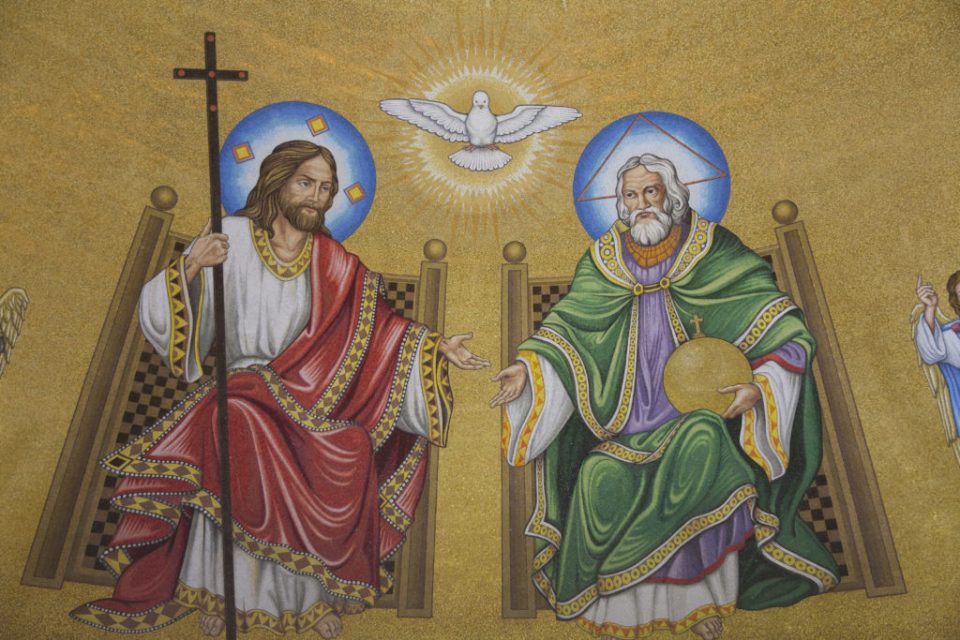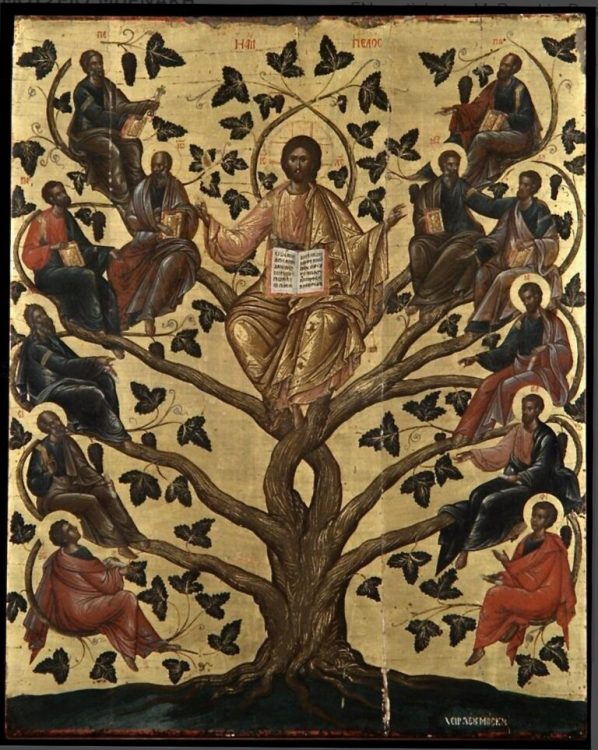The Integrity of Human Love (Why Marriage, Sex and Babies Belong Together)

St. Philip Institute on Christianity and Contraception (Video)
July 25, 2018
John M. Grondelski: Humanae Vitae’s Challenge to Modernity
July 25, 2018
CNS file photo/Jon L. Hendricks
By David S. Crawford, Knights of Columbus, 7/1/2018
THE CHURCH, AS A LOVING MOTHER, SEEKS TO ARTICULATE AND PRESERVE THE MEANING OF MARRIAGE
As a convert, I am sometimes asked what brought me into the Catholic faith. Conversion cannot be reduced to a simple formula, but the answer for me, at least in part, was being deeply struck and attracted by the truth and beauty of the Church’s understanding of marriage. We often hear that the Church’s teachings on marriage and sex drive people away, but this certainly not my own response as a husband and father.
When it comes to such topics, it is easy for people to reject the Church’s teachings out of hand. This is certainly the case with Blessed Paul VI’s encyclical Humanae Vitae, which for 50 years has been much maligned but seldom read.
Contrary to popular belief, the Catholic Church is not opposed to sex. Rather, an examination of some of Humanae Vitae’s key teachings — including the four characteristics of married love and the inseparable connection of the meanings of sex — reveals the Church’s high regard for sex, viewed in its proper context.
FOUR CHARACTERISTICS OF MARRIED LOVE
Section 9 of Humanae Vitae speaks of four foundational “characteristics” of marriage.
1. Married love is fully human and involves free will. It is not the love of angels (who lack bodies), nor the instinct of animals (who lack spiritual souls). Rather, it unites husband and wife in both body and spirit. It is lived out in bodily form in the day-in and day-out lives they share together. This love is uniquely expressed and made possible in the bodily act of the marital embrace.
2. Married love is total. It is a unique kind of love that results in bodily and spiritual oneness and mutual belonging. Given to each other by God, husband and wife are called to share everything with the other and to put the other first. Most especially, the oneness to which husband and wife are called is made visible in the very flesh of their children.
3. The third characteristic — faithfulness for life — is implied by the previous two. If married love is spiritual, embodied and total, it cannot be partial or limited. If husband and wife belong mutually each to the other, they cannot bestow themselves to another. Likewise, they cannot give themselves “only for a time.” Married love implies the gift of one’s whole life.
4. Finally, married love is fruitful. It is the very nature of married love to be directed toward children and the family. When we stop and think about it, the male body makes no sense if considered separately from the female body, and vice versa. The complementarity of man and woman just as obviously rests on the possibility of having children together. Without this ordination to bearing and raising children, the love of husband and wife risks closing in on itself. Scripture therefore relates the creation of man and woman directly and immediately to the first commandment of the Bible: “Be fruitful and multiply” (Gen 1:28).
THE TWO MEANINGS OF THE MARITAL ACT
With this background, we can now better understand Humanae Vitae’s central teaching: that each and every conjugal act must be “open” to new life.
This teaching does not mean that spouses must always have the express purpose of conceiving a child when they come together. Nor does it imply a lack of “openness” when, through no action of their own, conception cannot occur, such as during an infertile period of a woman’s cycle. Nor does it mean that spouses cannot, for serious reasons, consciously limit their marital acts to such times of infertility, as through natural family planning.
If openness to life does not mean any of these things, what does it mean? The answer becomes clear when we consider what Paul VI writes in section 12 of his encyclical: The conjugal act possesses two meanings — the unitive meaning and procreative meaning — which must never be separated.
In teaching that these two meanings must never be separated, he is telling us that we must never purposefully do anything that would break apart the wholeness of the marital act.
In our day and age, the relationship between married love and children has become uncertain. Modern contraceptives suggest that sex may be had without children, just as new reproductive technologies suggest that children may be had without sex. In this way, contemporary society tends to fragment the full meaning of married love into pieces.
But just as a living, breathing organism cannot survive dissection and dismemberment, love cannot fully live and breathe when its inner meanings are separated.
AN EXPRESSION OF LIFE-GIVING LOVE
Finally, we can better see how the marital act is an embodiment and expression of marital love, and must therefore embody and express all of the characteristics of marital love. First, it must embody and express the oneness and total, exclusive mutual belonging of the spouses. This is the unitive meaning. But it must also embody and express openness — an openness that turns the spouses’ love outward and beyond themselves. This is the procreative meaning.
For love to be genuine, it must also be whole. We cannot pick and choose among the parts or aspects of love and continue to call it love. If the spouses attempt to suppress one of the inner meanings of the marital act, then they are also suppressing that act’s ability to embody and express the full meaning of conjugal love. In other words, by suppressing either of the unitive or procreative meanings, they alter and deform the act itself. They deprive it of its ability to express their marital love. They take away its life and breath.
Far from being a negative pronouncement on sexuality, the Church’s teaching is her response to Christ’s demand that love be protected and nurtured in its wholeness and integrity. This is also what makes the teaching so attractive.
DAVID S. CRAWFORD is associate dean and associate professor of moral theology and family law at the Pontifical John Paul II Institute for Studies on Marriage and Family at The Catholic University of America in Washington, D.C. He is a member of Potomac Council 433 in Washington.
UNCHANGED TRUTH: THE CHURCH’S CONSISTENT TEACHING

Photo by Servizio Fotografico Vaticano




